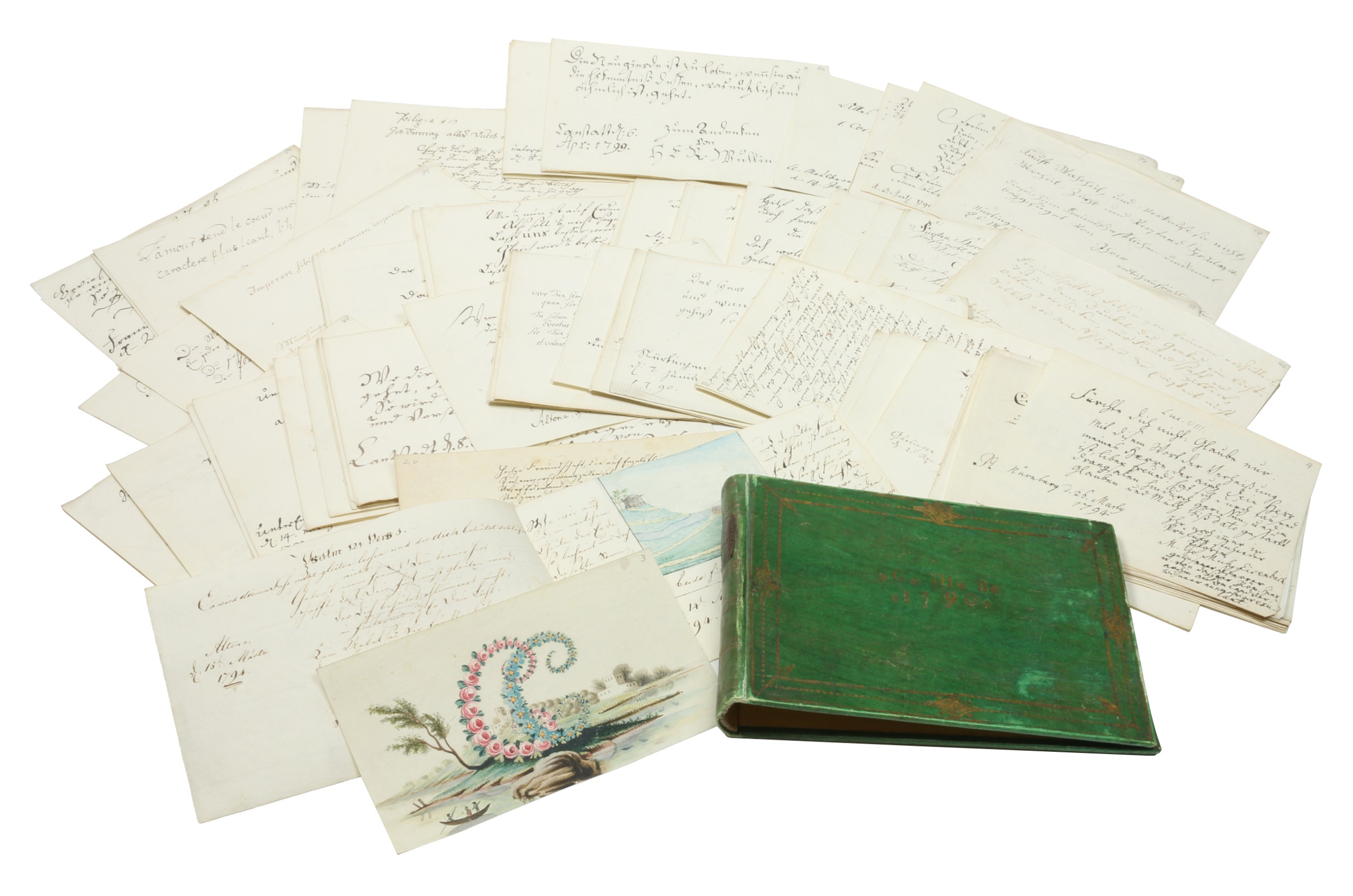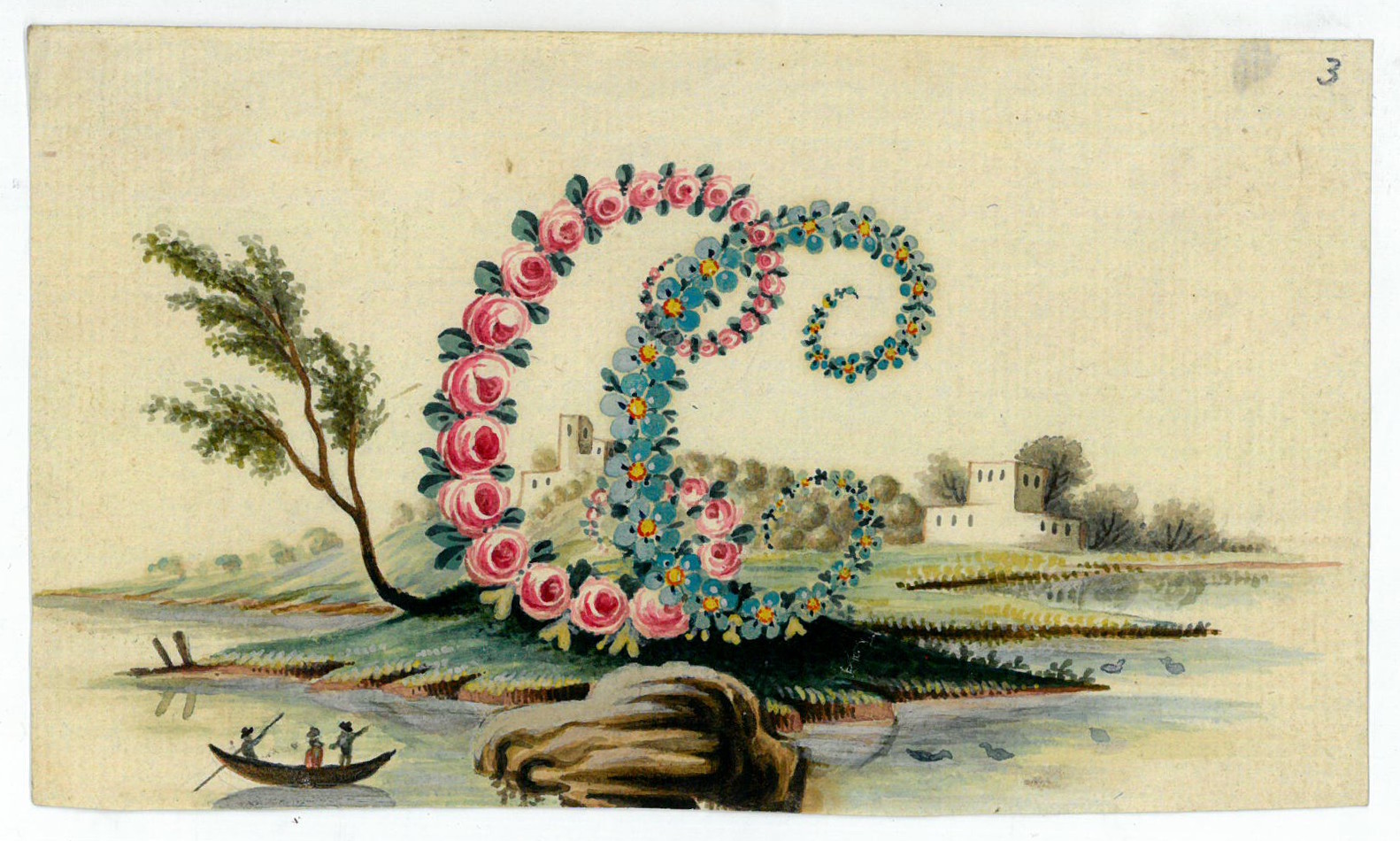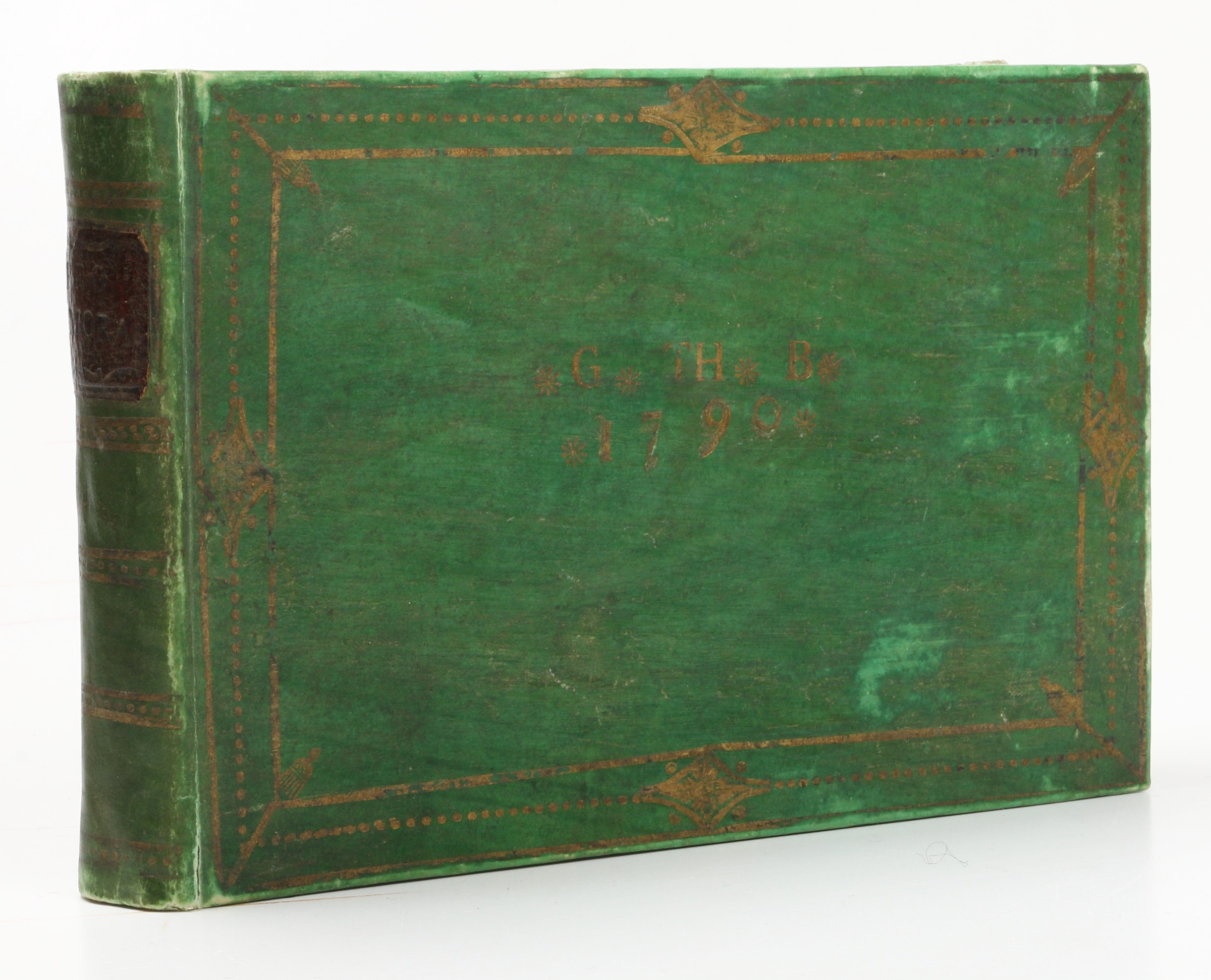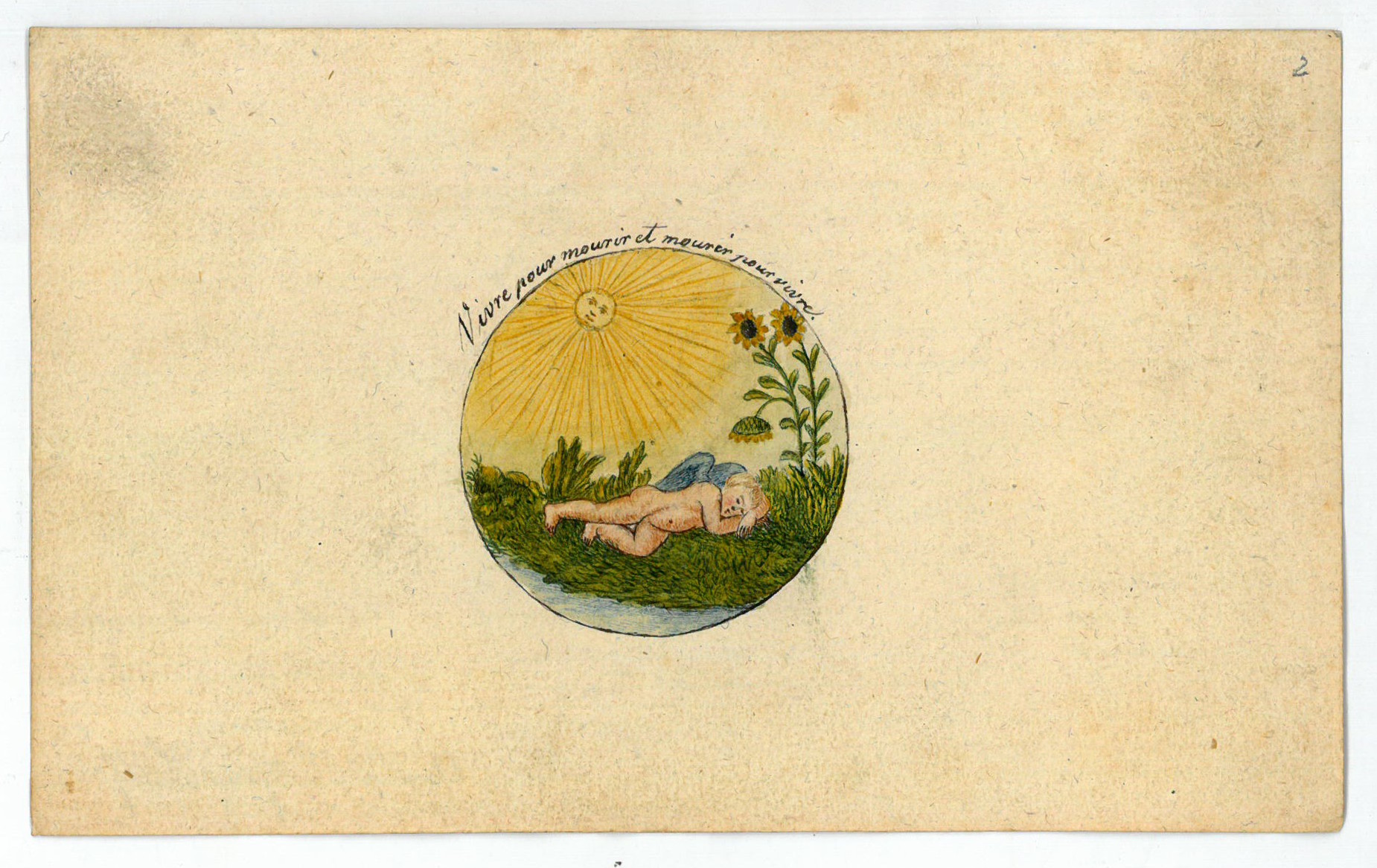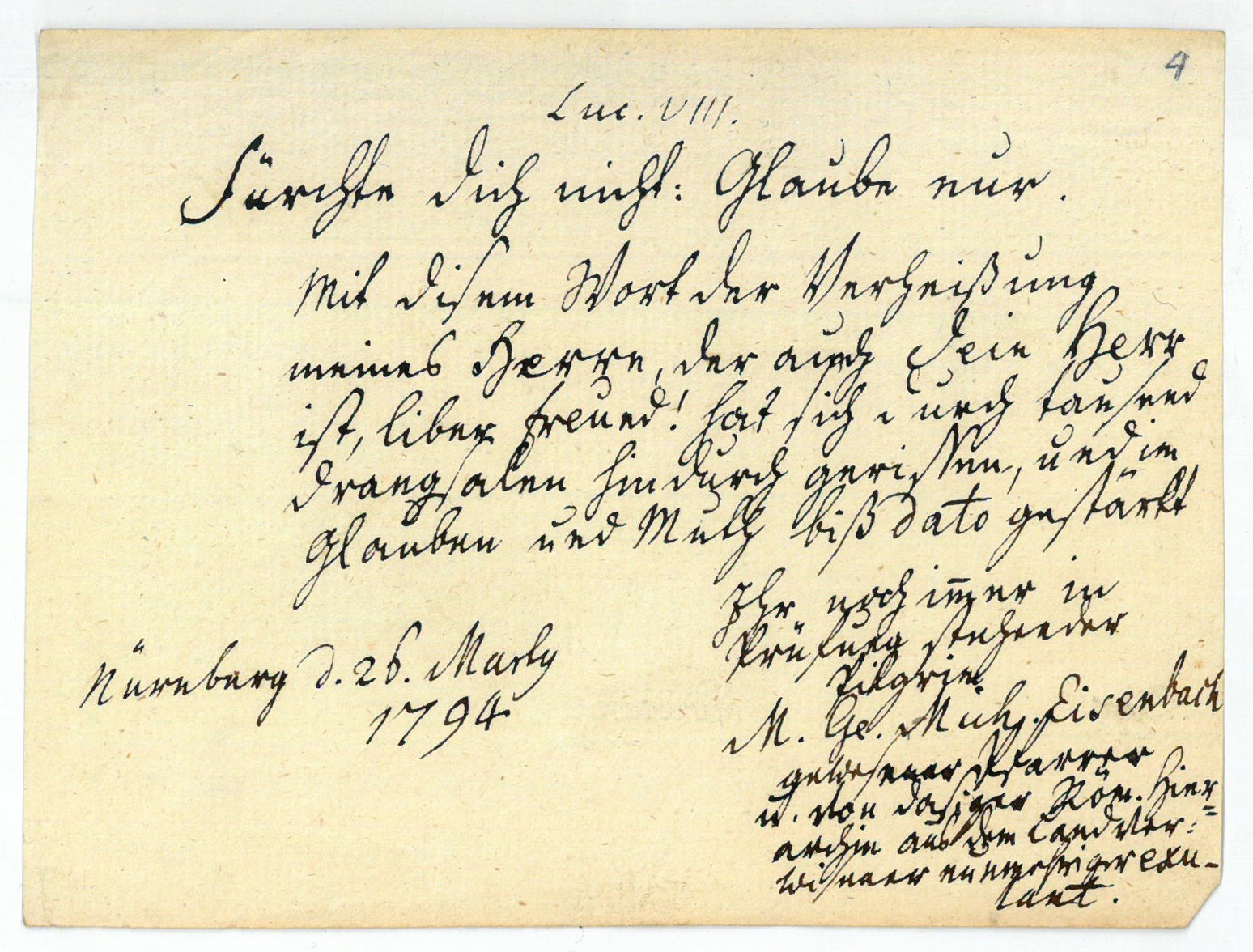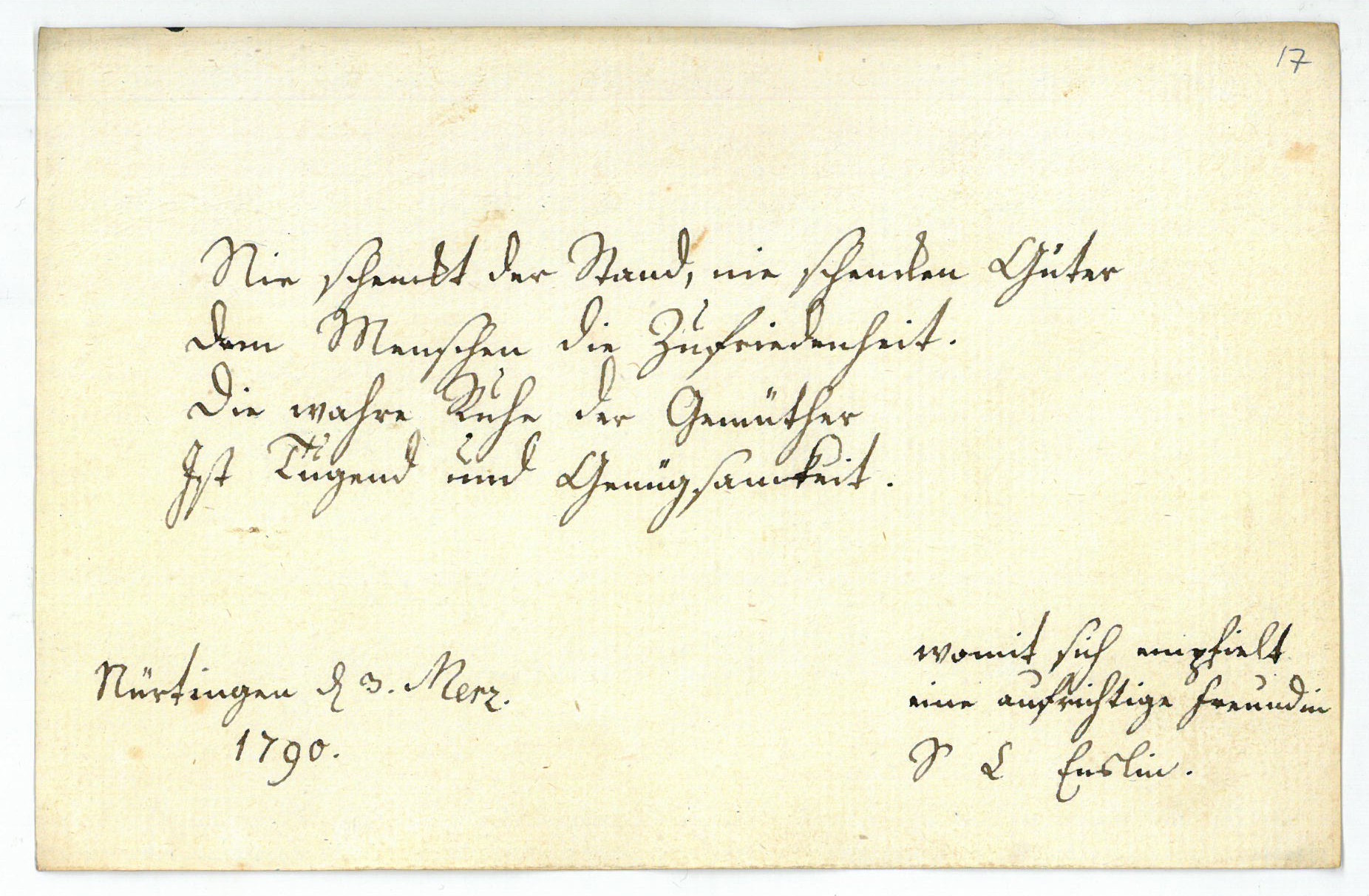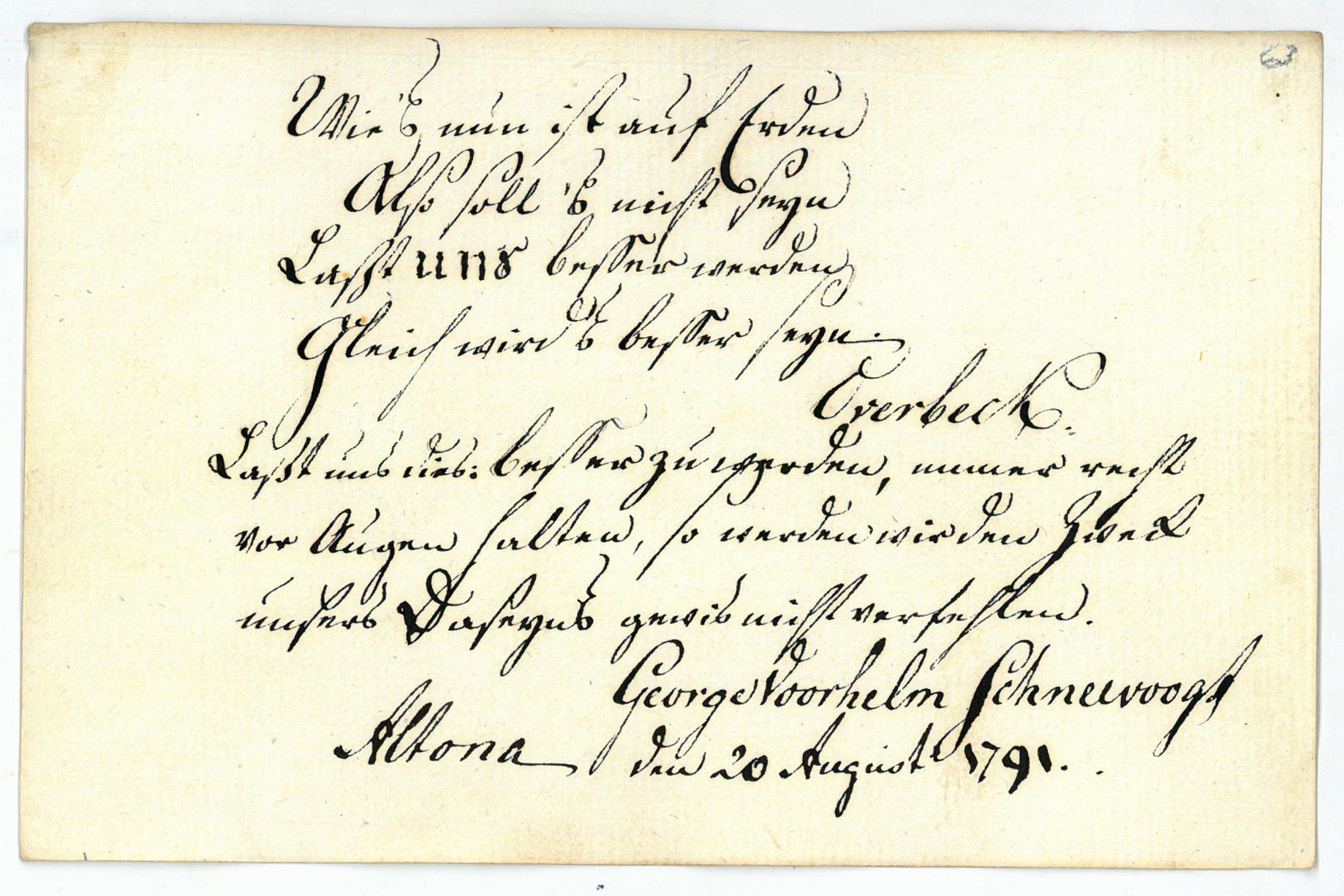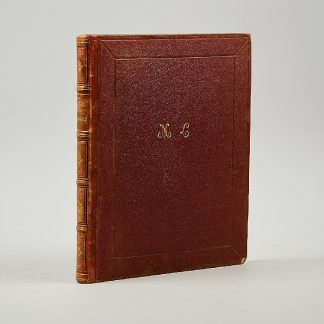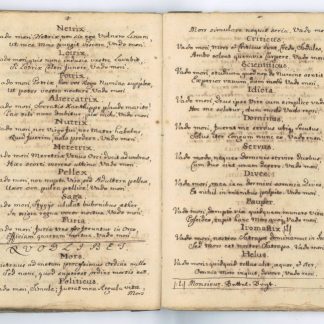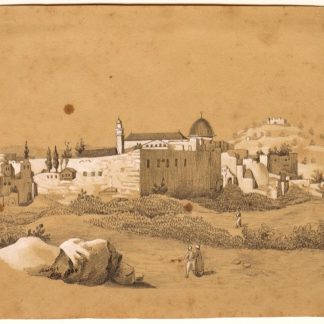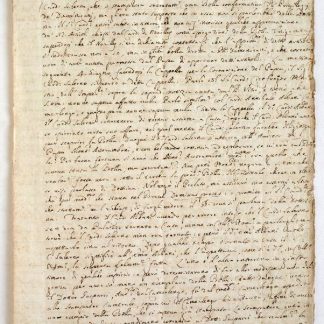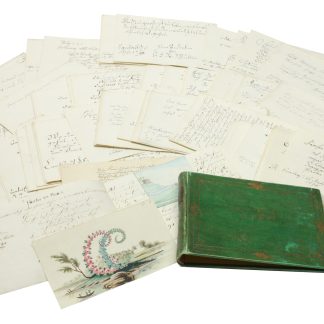"Vivre pour mourir et mourir pour vivre": Swabian friendship album from Hölderlin's circle
Friendship album of Georg Thomas Bach.
Oblong 8vo (160 x 105 mm). German, Latin and French manuscript on paper. 90 ff. with ca. 90 entries, 3 watercolours, and 1 silhouette. Stored loosely in contemporary green cover boards, gilt with spine label "Pro Memoria" and monogrammed upper cover "G TH B 1790". All edges gilt.
€ 9,500.00
An exceptionally pretty album amicorum, boasting fine and often highly personal entries by the owner's friends of both sexes, often in very appealing calligraphy.
Georg Th. Bach was born in Nürtingen in 1771 and attended the local secondary school where he would later become a teacher himself; his further education would have taken place at Stuttgart or Nuremberg. The album does not suggest that he attended a university, and most entries are by Protestant ministers, vicars, or educators. Bach visited a large number of villages and small towns in Württemberg, but also Altona, Frankfurt am Main, and Göttingen.
In Nürtingen Jakob Friederich Klemm (1733-93) signed the album, the founder of the local Realschule who is also credited with introducing to Germany the puzzle game invented by John Spilsbury around 1760. Other local contributors are the teacher Georg Friedrich Ettensberger (1756-1824), the civil servant Karl Christoph Friedrich Gock (1776-1849), Friedrich Hölderlin's half-brother, as well as the deacon Nathaniel Köstlin (1744-1826), Hölderlin's private instructor. Bach's "loving mother" Veronica Dorothea bids her son farewell with a quote from the Psalms.
From Stuttgart hails the contribution of Konrad Friedrich Schüle (1771-1833), partner in the textile business of Kolb & Schüle, from nearby Grafenberg that of Christian Gottlob Pregizer, the later vicar of Haiterbach after whom the radical pietist "Pregizer Society" was named. The vicars of Unternsingen, Bickelsberg und Ditzingen, Christoph Friedrich Cuhorst (1727-93), Johann Immanuel Friedrich Schmid (1756-1821), and Johann Christian Zügel (1723-95), are present along with the vicar of Münchingen, Christoph Ludwig Flattich (1756-1822), who was then assisting his father, the important Protestant educator Johann Friedrich Flattich. On 14 June 1790 Johann Ludwig Mannhardt (1749-1816) signed the album, major domo of the Maulbronn monastery and brother of the important theologian Johann Wilhelm Mannhardt.
In Altona, in 1791, Bach met Hinrich van der Smissen (1742-1814), the grandson of the like-named Mennonite entrepreneur and shipowner, as well as two other members of the family and the young Dutch botanist George Voorhelm Schneevoogt (1775-1850). Two 1794 entries from Nuremberg are of particular interest: that of the spice trader Johann Christoph Karg (1733-1806), a close friend and correspondent of Lavater, and that of Georg Michael Eisenbach (1728-1804), who in 1783 had been made the first Protestant pastor of Eferding in Upper Austria, two years after Emperor Joseph II had issued his Patent of Toleration. As ususal, Eisenach did not take long to clash with the upper echelons of his clergy; he was evicted from Austria in 1788 and settled in Nuremberg as a private educator.
Another member of the van der Smissen family added to his calligraphically charming entry a small watercolour illustrating the long and winding as well as the short and straight road, both under God. An entry by Christian Gottfried Hellfeld of Schleusingen is embellished on the verso by a pretty emblem with the motto, "Vivre pour mourir et mourir pour vivre". Louise Huzelin, daughter of the Schnaitheim pastor Ludwig Christoph Huzelin (1725-83), is shown in a silhouette portrait. A particularly pretty wastercolour, not clearly attributed to any single entry, depicts an idealized landscape with fantastical flower ornaments.
Covers a little rubbed and bumped. All leaves numbered in pencil by an earlier collector; some light browning and duststains, occasional light edge tears or creases, but still an entirely charming survival.

